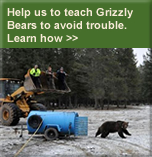mEthods
DNA surveys
We use DNA surveys to count grizzly bears, or estimate population size, study movements and fragmentation, and look for solutions to conservation problems by identifying specific linkage areas where bears choose to move through human environments.
We remotely collect hair from bears to sample their DNA using a scent lure and barbed wire (See pictures below). Amazing, but it works remarkably well. From the roots of their hair we generate a “DNA fingerprint” that identifies individuals just as they do in human forensics. Repeated sampling allows us to estimate population size using mark-recapture methods. (Proctor et al. 2007a – Purcell/Selkirk Population estimation report). This method was invented right here in BC’s west Kootenays in 1995 and is now used around the world on many species.
We also use genetic data to determine where bears were born and if they have moved to a neighboring population or not (Proctor et al. 2005b Hwy 3 paper). And lately we are linking where we “sampled” bears with habitat characteristics allowing us to predict good linkage habitat (Proctor et al. 2008b – habitat security report).
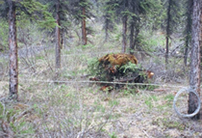
DNA Sampling Site
|
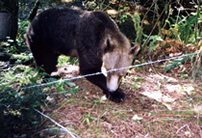
Grizzly entering DNA sample site |
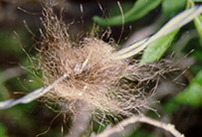
Sampled bear hair |
Radio Telemetry
We also put radio collars on bears to find out details of their movements and habitat use. These data are used to develop detailed habitat maps (Link: Proctor et al. 2008b Habitat security report) and also allow us to predict linkage areas (Link: Proctor et al. 2008a - new linkage report). We use Global Positioning System (GPS) collars that communicate with satellites and take a location of the bear every hour, 24 hours a day for 2 seasons. We learn astonishing things about bears including detailed movements, and how, when, and where they cross highways and move through human environments and stay out of trouble.
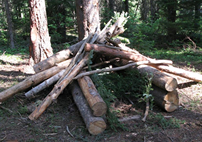
Trap Site
|
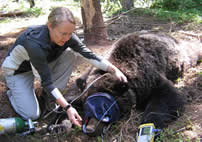
Bear handling |
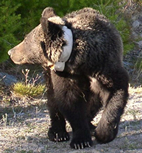
Radio collared grizzly bear |
|
Back to Top |

